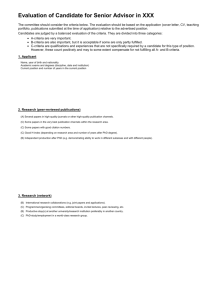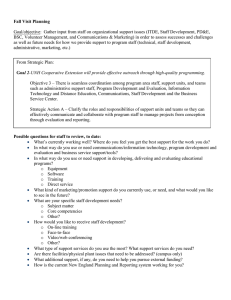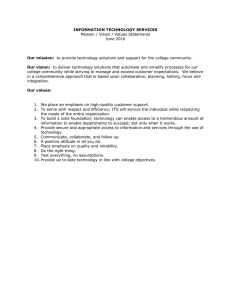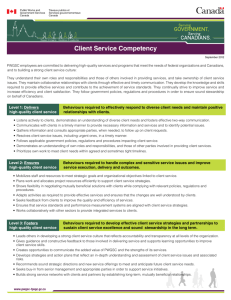Pennsylvania`s Youngest Learners Have Waited Long Enough
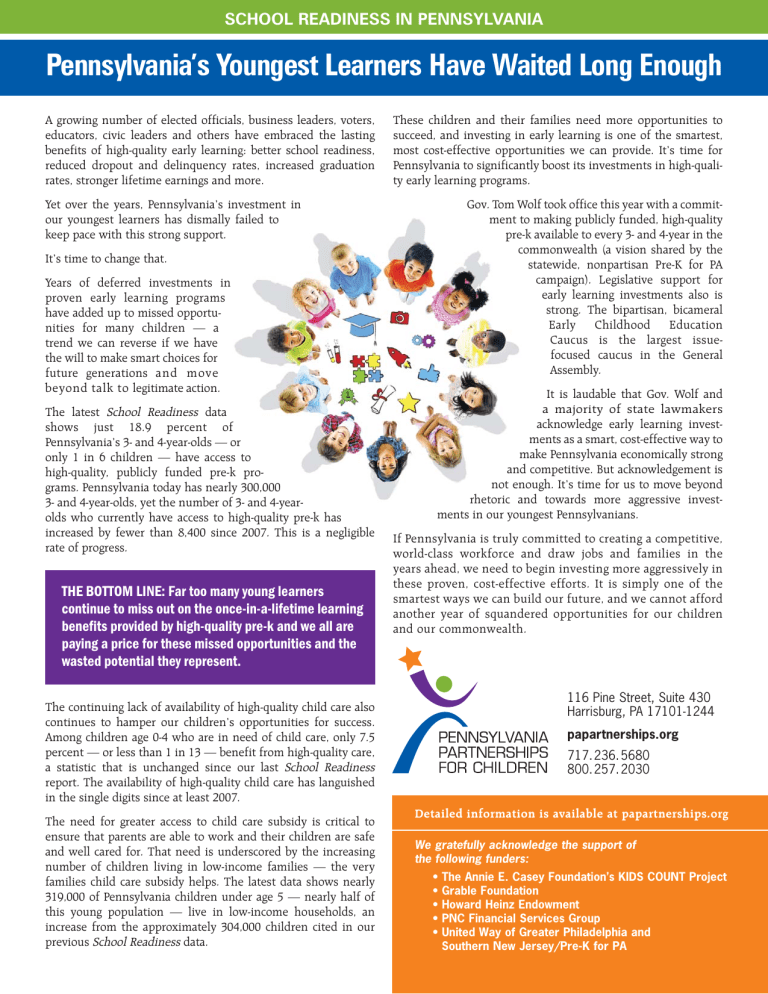
SCHOOL READINESS IN PENNSYLVANIA
Pennsylvania’s Youngest Learners Have Waited Long Enough
A growing number of elected officials, business leaders, voters, educators, civic leaders and others have embraced the lasting benefits of high-quality early learning: better school readiness, reduced dropout and delinquency rates, increased graduation rates, stronger lifetime earnings and more.
Yet over the years, Pennsylvania’s investment in our youngest learners has dismally failed to keep pace with this strong support.
It’s time to change that.
Years of deferred investments in proven early learning programs have added up to missed opportunities for many children — a trend we can reverse if we have the will to make smart choices for future generations and move beyond talk to legitimate action.
The latest School Readiness data shows just 18.9 percent of
Pennsylvania’s 3- and 4-year-olds — or only 1 in 6 children — have access to high-quality, publicly funded pre-k programs. Pennsylvania today has nearly 300,000
3- and 4-year-olds, yet the number of 3- and 4-yearolds who currently have access to high-quality pre-k has increased by fewer than 8,400 since 2007. This is a negligible rate of progress.
THE BOTTOM LINE: Far too many young learners continue to miss out on the once-in-a-lifetime learning benefits provided by high-quality pre-k and we all are paying a price for these missed opportunities and the wasted potential they represent.
These children and their families need more opportunities to succeed, and investing in early learning is one of the smartest, most cost-effective opportunities we can provide. It’s time for
Pennsylvania to significantly boost its investments in high-quality early learning programs.
Gov. Tom Wolf took office this year with a commitment to making publicly funded, high-quality pre-k available to every 3- and 4-year in the commonwealth (a vision shared by the statewide, nonpartisan Pre-K for PA campaign). Legislative support for early learning investments also is strong. The bipartisan, bicameral
Early Childhood Education
Caucus is the largest issuefocused caucus in the General
Assembly.
It is laudable that Gov. Wolf and a majority of state lawmakers acknowledge early learning investments as a smart, cost-effective way to make Pennsylvania economically strong and competitive. But acknowledgement is not enough. It’s time for us to move beyond rhetoric and towards more aggressive investments in our youngest Pennsylvanians.
If Pennsylvania is truly committed to creating a competitive, world-class workforce and draw jobs and families in the years ahead, we need to begin investing more aggressively in these proven, cost-effective efforts. It is simply one of the smartest ways we can build our future, and we cannot afford another year of squandered opportunities for our children and our commonwealth.
The continuing lack of availability of high-quality child care also continues to hamper our children’s opportunities for success.
Among children age 0-4 who are in need of child care, only 7.5
percent — or less than 1 in 13 — benefit from high-quality care, a statistic that is unchanged since our last School Readiness report. The availability of high-quality child care has languished in the single digits since at least 2007.
The need for greater access to child care subsidy is critical to ensure that parents are able to work and their children are safe and well cared for. That need is underscored by the increasing number of children living in low-income families — the very families child care subsidy helps. The latest data shows nearly
319,000 of Pennsylvania children under age 5 — nearly half of this young population — live in low-income households, an increase from the approximately 304,000 children cited in our previous School Readiness data.
116 Pine Street, Suite 430
Harrisburg, PA 17101-1244 papartnerships.org
717. 236. 5680
800. 257. 2030
Detailed information is available at papartnerships.org
We gratefully acknowledge the support of the following funders:
• The Annie E. Casey Foundation’s KIDS COUNT Project
• Grable Foundation
• Howard Heinz Endowment
• PNC Financial Services Group
• United Way of Greater Philadelphia and
Southern New Jersey/Pre-K for PA
2013 Current
Significance Indicator Report Report Change
[READY COMMUNITIES AND FAMILIES]
Children living in poverty are more likely to have poor nutrition, chronic health problems, be less prepared for and have more difficulty in school.
Children Living in Low-Income Families
Children ages 0-4 who live in households earning less than 200% of the federal income poverty guidelines (FPIG) or $47,700 for a family of four.
Children living with mothers with low education levels are less likely to receive cognitive stimulation and high-quality child care and more likely to have diminished reading skills.
Births to Mothers with Less than a High School Degree
Of all births where education is known.
Children who have experienced abuse and neglect, or are in foster care placement, are more likely to perform poorly in school, have lower IQ scores, and have difficulty with language ability. They are likelier to have social, emotional and physical health problems.
Child Abuse and Neglect — Reports
Reported incidents of suspected child abuse of children ages 0-4 through the Childline and Abuse Registry. Does not include General Protective
Services reports, which include less severe general neglect reports.
(Number and rate per 1,000 children ages 0-4)
Child Abuse and Neglect — Substantiations
Founded or indicated reports of child abuse of children ages 0-4. Does not include the number of children determined to need General Protective Services.
Children living in homes where English is not the primary language spoken are more likely to enter school with lower math, reading and general knowledge assessments.
Children in Foster Care Placement — Ages 0-4
(Rate per 1,000 children ages 0-4)
English Not the Primary Language Spoken in the Home
Children ages 0-4 living in families where English is not the primary language spoken at home and English is not spoken “very well.”
304,407
41.6%
20,777
14.7%
4,461
6.1
12.8%
6,555
9.0
30,722
4.3%
[READY SERVICES — HEALTH]
Children who are uninsured are less likely to access primary health care services that can prevent or address chronic or acute health conditions. Lack of health care or delays in treatment can negatively impact cognitive, emotional, behavioral and physical development.
Uninsured children are more likely to miss school and have diminished academic achievement.
Children Lacking Health Insurance
Children ages 0-4 who are uninsured.
Children Funded by Public Health Insurance
Ages 0-4.
Babies born at low birth weight are likelier to die in the first year of life, have disabilities and health problems that can include developmental delays, visual and hearing impairments and chronic respiratory ailments. They may have trouble with social skills and show higher rates of depression, anxiety disorders, physical disabilities and hyperactivity and aggression.
Children Born at Low Birth Weight
Babies born weighing under 2,500 grams.
[READY SERVICES — EARLY CARE AND EDUCATION]
Early Intervention is designed to assist children with developmental delays or disabilities before they enter school by working with their parents, caregivers and communities to build on the children’s strengths and maximize their experiences and opportunities. Early Intervention services help improve children’s school readiness.
High-quality pre-k helps improve the school readiness of young children by enhancing their social, emotional and cognitive development.
Children who attend high-quality pre-k enter school more prepared and achieve greater success, including fewer grade retentions, less special education placement and higher standardized test scores.
Early Intervention
Children birth to the age they begin school enrolled in the state’s Early
Intervention program.
Publicly Funded, High-Quality Pre-Kindergarten
Percent of children 3 and 4 enrolled in public school pre-K, Head Start,
PA Pre-K Counts, or Keystone STAR 3 or 4 through the child care subsidy program.
Children who receive high-quality child care show better literacy skills and score higher on tests of both cognitive and social skills than children cared for in other arrangements. High-quality early care and education programs have demonstrated a strong return on investment.
High-Quality Child Care
Availability of high-quality child care (NAEYC, NAFCC, NECPA or COA accredited or Keystone STAR 3 and 4) for children ages 0-4 in need of child care services.
41,434
5.8%
363,229
49.8%
11,568
8.2%
89,810
52,933
17.8%
36,681
7.5%
The availability of child care subsidies to low-income families increases the opportunity for them to access high-quality care for their children, enhancing their school readiness and increasing the likelihood that parents remain employed.
Access to Child Care Subsidy
Number of slots for infants, toddlers and preschool children in the state’s subsidized child care system.
Children in Child Care Subsidy By Federal
Poverty Income Guidelines (FPIG) Infants, toddlers and preschoolers in child care subsidy by household income as it relates to FPIG, with 100% FPIG being $23,850 a year for a family of four.
Less than or equal to 100% FPIG
101% to 200% FPIG
201% to 235% FPIG
Children on Child Care Subsidy Waiting List
Infants, toddlers and preschoolers on child care subsidy waiting list.
Note: Values in the 2013 Report column were updated from those included in the School Readiness in Pennsylvania — 2013 Report for Children Living in Low-Income Families, Children in Foster Care
Placement, English Not the Primary Language Spoken in the Home,
Children Lacking Health Insurance, Publicly Funded, High-Quality
Pre-Kindergarten, and High-Quality Child Care.
Child Care Subsidy Waiting List Duration
Average time (in weeks) between enrollment on waiting list and service provision for younger children receiving child care subsidy.
38,936
32,886
54.4%
26,032
43.1%
1,494
2.5%
6,230
19.6
318,812
43.7%
20,291
14.5%
5,260
7.2
14.4%
6,477
8.9
23,130
3.3%
37,456
5.3%
337,863
46.3%
11,381
8.1%
88,527
56,206
18.9%
37,156
7.5%
40,369
32,576
53.5%
26,648
43.8%
1,664
2.7%
3,259
13.3
LOST GROUND
NO SIGNIFICANT
CHANGE
—
NO SIGNIFICANT
CHANGE
MADE PROGRESS
MADE PROGRESS
LOST GROUND
NO SIGNIFICANT
CHANGE
NO SIGNIFICANT
CHANGE
MADE PROGRESS
NO SIGNIFICANT
CHANGE
MADE PROGRESS
—
MADE PROGRESS
MADE PROGRESS
